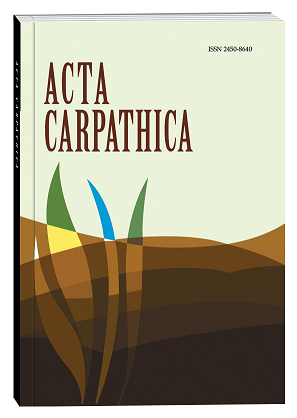COPPER (II) IONS ENHANCE THE CYTOTOXIC EFFECT OF RECOMBINANT HUMAN ALPHA-SYNUCLEIN ON OGATAEA POLYMORPHA YEAST CELLS
DOI:
https://doi.org/10.32782/2450-8640.2024.2.4Keywords:
alpha-synuclein, Parkinson’s disease (PD), copper, yeast Ogataea polymorpha.Abstract
It is known that protein aggregates in the neurons of individuals suffering from Parkinson’s disease (PD) contain elevated levels of certain metal ions, such as zinc, iron, and copper. By interacting with proteins, these metals affect the properties of brain regions and lead to neurodegenerative changes. Currently, a wide range of models is available for studying various aspects of PD pathogenesis in vivo, utilizing different model organisms – from unicellular eukaryotes to primates. As an artificial model of PD in our study, we used the yeast Ogataea polymorpha with constitutive expression of the recombinant human alpha-synuclein protein, the main toxic factor in PD. The aim of the study was to investigate the impact of excess copper ions in the growth medium on the physiological properties of O. polymorpha cells with constitutive expression of alpha-synuclein. Yeast strains were grown on YPS rich medium (1% yeast extract, 1% bactopeptone, 1% sucrose), YNB mineral medium (0.67% yeast nitrogen base (Difco), 0.5% ammonium sulfate, and 2% sucrose). For solid media, agar was added at a concentration of 2%. The culture temperature was 37°C and the aeration conditions were shaking (200 rpm). All experiments were replicated at least three times. Statistical analysis was performed using the Student’s t-test. Results are presented as means with standard errors. Values with P≤0.05 were considered. During the study, it was established that increasing the concentration of Cu²⁺ in the growth medium to 500 and 750 μM CuCl₂ caused a significant toxic effect on the cells of the model strain (NCYC 495/SNCA-GFP) compared to the wild-type strain (NCYC 495 pr). It was also found that, under these cultivation conditions, the level of ROS, specifically hydrogen peroxide, was lower in the model yeast strain than in the wild-type strain. This is likely due to the chelating properties of the alpha-synuclein protein towards copper ions, which limited the involvement of this metal in initiating oxidative stress and, consequently, reduced ROS production. Since hydrogen peroxide is the primary substrate of catalase, an enzyme in the antioxidant defense system, the activity of this enzyme was analyzed under excess copper ion conditions in the growth medium. At a Cu²⁺ concentration of 250 μM, catalase activity in both studied yeast strains was the highest, but it decreased at 500 μM. This effect can be explained by the fact that, at high concentrations, copper acts as a denaturing agent for the catalase protein, leading to its inactivation. It should be noted that excess Cu²⁺ ions did not cause alpha-synuclein aggregation but did enhance the cytotoxic effect of this protein on the cells of the model strain.
References
1. Han D., Zheng W., Wang X., Chen Z. Proteostasis of α-Synuclein and Its Role in the Pathogenesis of Parkinson’s Disease. Frontiers in cellular neuroscience. 2020. Vol. 14. P. 45. URL: https://doi.org/10.3389/fncel.2020.00045.
2. Stefanis L. α-Synuclein in Parkinson’s disease. Cold Spring Harbor perspectives in medicine. 2012. Vol. 2, No. 2. P. a009399. URL: https://doi.org/10.1101/cshperspect.a009399.
3. Bisaglia M., Bubacco L. Copper Ions and Parkinson’s Disease: Why Is Homeostasis So Relevant? Biomolecules. 2020. Vol. 10, No. 2. P. 195. URL: https://doi.org/10.3390/biom10020195.
4. Gaetke L. M., Chow-Johnson H. S., Chow C. K. Copper: toxicological relevance and mechanisms. Archives of toxicology. 2014. Vol. 88, No. 11. P. 1929–1938. URL: https://doi.org/10.1007/s00204-014-1355-y.
5. Shadrina M., Slominsky P. Modeling Parkinson’s Disease: Not Only Rodents? Frontiers in aging neuroscience. 2021. Vol. 13. P. 695718. URL: https://doi.org/10.3389/fnagi.2021.695718.
6. Denega I.O., Klymyshyn N.I., Sybirna N.O., Stasyk O.V., Stasyk O.G. Modeling of molecular processes underlying Parkinson’s disease in cells of methylotrophic yeast Hansenula polymorpha. Studia Biologica. 2014. Vol. 8, No. 2. P. 5–16.
7. Hrushanyk N.V., Fedorko Y.I., Stasyk O.V., Stasyk O.G. Construction of model strain of yeast Saccharomyces cerevisiae with regulated expression of recombinant human alphasynuclein.
8. Lowry O., Rosebrough N., Farr A. L., Randall R. Protein measurement with the Folin phenol reagent. Journal of Biological Chemistry. 1951. Vol. 193, No. 1. P. 265–275. DOI: 10.1016/s0021-9258(19)52451-6.
9. Мосійчук Н. М., Семчишин Г. М., Байляк М. М., Кубрак О. І., Гусак В. В., Ровенко Б. М., Абрат О. Б. Дослідження вільнорадикальних процесів у живих організмах. 2014. 32 с.
10. Brown D.R. Metal binding to alpha-synuclein peptides and its contribution to toxicity. Biochemical and Biophysical Research Communications. 2009. Vol. 380, No. 2. P. 377–381. DOI: 10.1016/j.bbrc.2009.01.103.
11. Dias V., Junn E., Mouradian M.M. The role of oxidative stress in Parkinson’s disease. Journal of Parkinson’s disease. 2013. Vol. 3, No. 4. P. 461–491. URL: https://doi.org/10.3233/JPD-130230.
12. Shields H.J., Traa A., Van Raamsdonk J.M. Beneficial and Detrimental Effects of Reactive Oxygen Species on Lifespan: A Comprehensive Review of Comparative and Experimental Studies. Frontiers in cell and developmental biology. 2021. Vol. 9. P. 628157. URL:
https://doi.org/10.3389/fcell.2021.628157.
13. Gromadzka G., Tarnacka B., Flaga A., Adamczyk A. Copper Dyshomeostasis in Neurodegenerative Diseases-Therapeutic Implications. International journal of molecular sciences. 2020. Vol. 21, No. 23. P. 9259. URL: https://doi.org/10.3390/ijms21239259.
14. Wan O.W., Chung K.K. The role of alpha-synuclein oligomerization and aggregation in cellular and animal models of Parkinson’s disease. PloS ONE. 2012. Vol. 7, No. 6. P. e38545. URL: https://doi.org/10.1371/journal.pone.0038545.
15. Emamzadeh F.N. Alpha-synuclein structure, functions, and interactions. Journal of Research in Medical Sciences: The Official Journal of Isfahan University of Medical Sciences. 2016. Vol. 21. P. 29. URL: https://doi.org/10.4103/1735-1995.181989.








